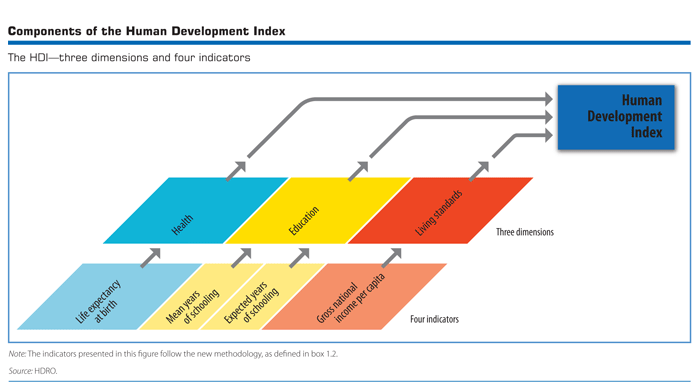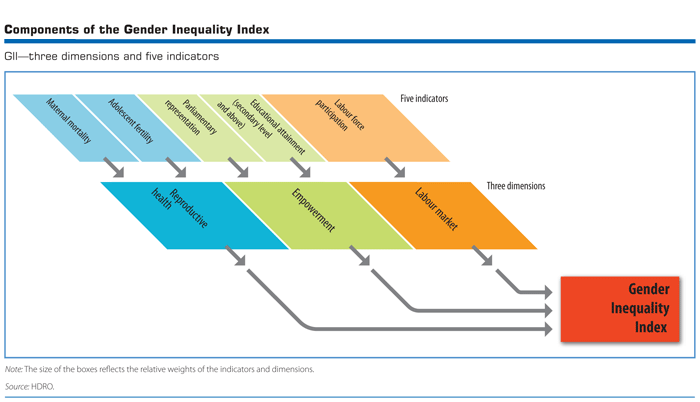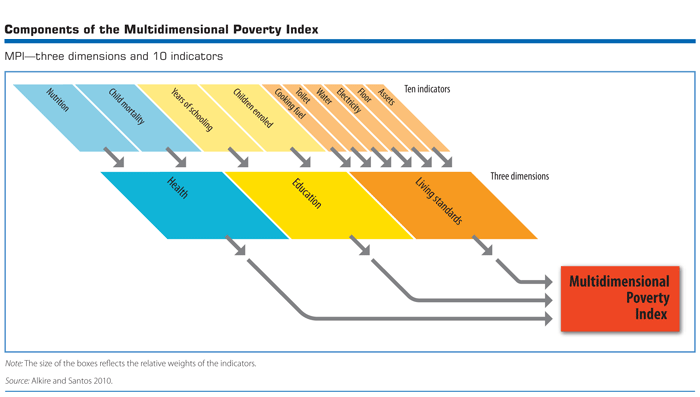Composite Indicators
Human Development Index
The Human Development Index (HDI) is a summary measure of human development. It measures the average achievements in a country in three basic dimensions of human development: a long and healthy life (health), access to knowledge (education) and a decent standard of living (income). Data availability determines HDI country coverage. To enable cross-country comparisons, the HDI is, to the extent possible, calculated based on data from leading international data agencies and other credible data sources available at the time of writing.
A composite index that brings together three variables adopted in 1990 developed jointly by Amartya Sen and Mahbub ul Haq.
- Long and healthy life ; life expectancy
- Improved education; adult literary
- Decent standard of living; GDP per capita

|
Category |
HDI Value |
|
High Human development |
.800 and above |
|
Medium human development |
.500 -0.799 |
|
Low human development |
Less than .500 |
Other composite indices
Gender Inequality Index
The Gender Inequality Index (GII) reflects women’s disadvantage in three dimensions—reproductive health, empowerment and the labour market—for as many countries as data of reasonable quality allow.

The index shows the loss in human development due to inequality between female and male achievements in these dimensions. It ranges from 0, which indicates that women and men fare equally, to 1, which indicates that women fare as poorly as possible in all measured dimensions. The health dimension is measured by two indicators: maternal mortality ratio and the adolescent fertility rate. The empowerment dimension is also measured by two indicators: the share of parliamentary seats held by each sex and by secondary and higher education attainment levels. The labour dimension is measured by women’s participation in the work force. The Gender Inequality Index is designed to reveal the extent to which national achievements in these aspects of human development are eroded by gender inequality, and to provide empirical foundations for policy analysis and advocacy efforts.
More information at http://hdr.undp.org/en/statistics/gii/
Inequality-adjusted Human Development Index (IHDI)
The Inequality-adjusted Human Development Index (IHDI) adjusts the Human Development Index (HDI) for inequality in distribution of each dimension across the population. The IHDI accounts for inequalities in HDI dimensions by “discounting” each dimension’s average value according to its level of inequality. The IHDI equals the HDI when there is no inequality across people but is less than the HDI as inequality rises. In this sense, the IHDI is the actual level of human development (accounting for this inequality), while the HDI can be viewed as an index of “potential” human development (or the maximum level of HDI) that could be achieved if there was no inequality. The “loss” in potential human development due to inequality is given by the difference between the HDI and the IHDI and can be expressed as a percentage.
More information http://hdr.undp.org/en/statistics/ihdi/
Multidimensional Poverty Index (MPI)
The Multidimensional Poverty Index (MPI) identifies multiple deprivations at the individual level in health, education and standard of living. It uses micro data from household surveys, and—unlike the Inequality-adjusted Human Development Index—all the indicators needed to construct the measure must come from the same survey. Each person in a given household is classified as poor or nonpoor depending on the number of deprivations his or her household experiences. These data are then aggregated into the national measure of poverty.

The MPI reflects both the incidence of multidimensional deprivation, and its intensity—how many deprivations people experience at the same time. It can be used to create a comprehensive picture of people living in poverty, and permits comparisons both across countries, regions and the world and within countries by ethnic group, urban or rural location, as well as other key household and community characteristics. The MPI builds on recent advances in theory and data to present the first global measure of its kind, and offers a valuable complement to income-based poverty measures. The 2011 Human Development Report (HDR) presents estimates for 109 countries with a combined population of 5.5 billion (79% of the world total). About 1.7 billion people in the countries covered—a third of their entire population—lived in multidimensional poverty between 2000 and 2010.
More information at http://hdr.undp.org/en/statistics/mpi/





